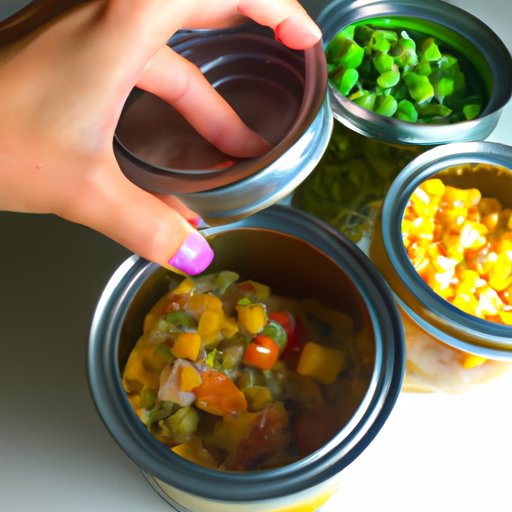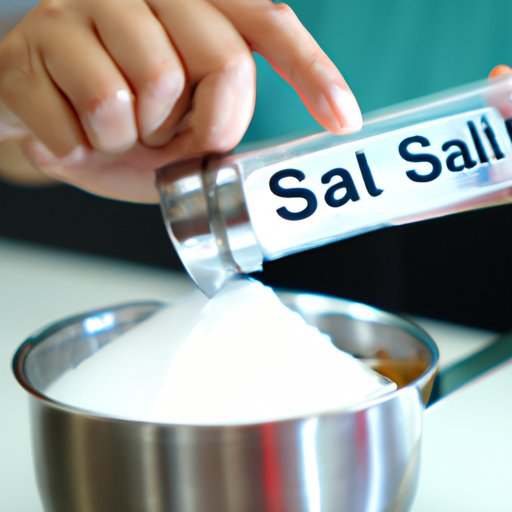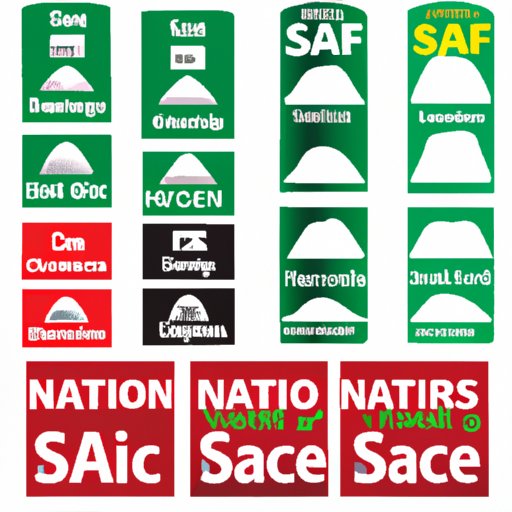Introduction
Salt is a mineral composed of sodium and chloride that is used to season food. It is an essential part of our diets as it helps us regulate our body’s fluid balance and also provides flavor to food. However, too much salt can lead to a variety of health issues, including high blood pressure and stroke. Therefore, it is important to limit our salt intake to reduce the risk of these conditions. This article will explore eight tips for reducing salt consumption.
Reduce Consumption of Processed and Packaged Foods
Processed and packaged foods are often high in sodium due to added preservatives and flavorings. Examples of these foods include canned soups, frozen meals, and pre-packaged snacks. To reduce your salt intake, try to avoid these types of foods and opt for fresh ingredients instead. Here are some tips to help you reduce your consumption of processed and packaged foods:
- Try to cook from scratch as much as possible.
- Choose fresh fruits and vegetables instead of canned or frozen.
- Read nutrition labels to identify high-sodium foods.
- Avoid adding salt when cooking.
Use Herbs, Spices and Citrus Juices to Add Flavor to Meals
Herbs, spices and citrus juices are great alternatives to adding salt to food. They add flavor without the added sodium. Examples of herbs and spices include basil, oregano, thyme, rosemary, cumin, garlic powder and paprika. Citrus juices such as lime and lemon juice are also good additions to dishes. Not only do they add flavor, but they also provide vitamins and minerals that are beneficial to your health. Using herbs, spices and citrus juices is a great way to reduce your salt intake while still enjoying flavorful meals.

Choose Fresh Ingredients Over Canned or Frozen Ones
When shopping for groceries, choose fresh ingredients over canned or frozen ones. Fresh ingredients typically contain less sodium than their canned or frozen counterparts. Some examples of fresh ingredients are lean meats, fresh fruits and vegetables, whole grains and low-fat dairy products. Choosing fresh ingredients not only reduces your salt intake, but it also provides more nutrients than processed or packaged foods.
Read Nutrition Labels to Identify High-Sodium Foods
Reading nutrition labels is a great way to identify high-sodium foods. The nutrition label will list the amount of sodium per serving, as well as the percentage of the daily recommended value. If the sodium content is high (above 20% of the daily value) then it is best to avoid that product. Additionally, look for low-sodium alternatives of the foods you regularly buy, such as low-sodium soups and reduced-salt condiments.

Avoid Adding Salt When Cooking
Many people tend to add salt when cooking, thinking it will enhance the flavor of the dish. However, this can drastically increase the amount of sodium in the meal. Instead, use other seasonings such as herbs, spices and citrus juices to add flavor to dishes. You can also try experimenting with different flavors such as ginger, turmeric, cayenne pepper and black pepper to create interesting flavor combinations.
Use Low-Sodium Substitutes
If you find that your meals need a salty kick, there are several low-sodium substitutes you can try. These include potassium chloride, sea salt, Himalayan pink salt and garlic-infused oil. These substitutes are much lower in sodium than regular table salt and can be used to season food without increasing the sodium content. Additionally, you can use them in recipes that call for salt to reduce the overall sodium content.
Conclusion
Reducing your salt intake is an important step towards maintaining a healthy diet. By following the tips outlined in this article, you can reduce your daily sodium intake and enjoy delicious, flavorful meals. Try substituting herbs, spices and citrus juices for added flavor, reading nutrition labels and avoiding processed and packaged foods. With a little bit of planning and effort, you can easily reduce your salt intake and maintain a healthy diet.
(Note: Is this article not meeting your expectations? Do you have knowledge or insights to share? Unlock new opportunities and expand your reach by joining our authors team. Click Registration to join us and share your expertise with our readers.)
